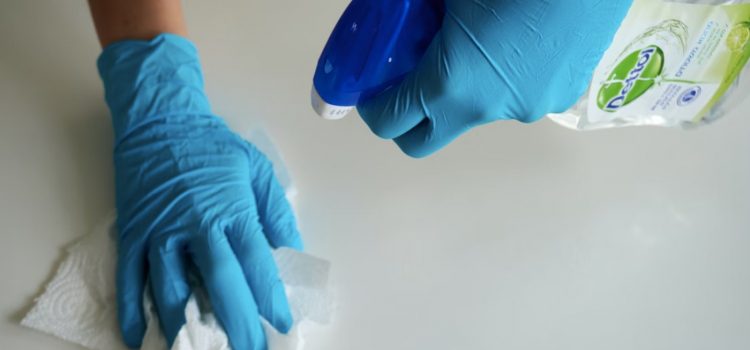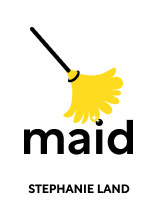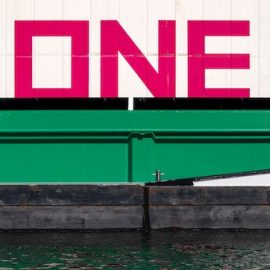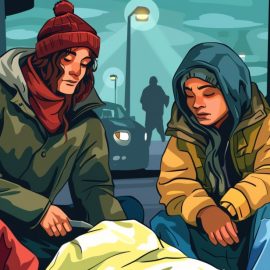

This article is an excerpt from the Shortform book guide to "Maid" by Stephanie Land. Shortform has the world's best summaries and analyses of books you should be reading.
Like this article? Sign up for a free trial here .
Is Maid a true story? Who is the book Maid about?
Maid is a memoir of Stephanie Land’s life as a single mom working as a housekeeper and relying on government assistance. Land discusses her entire life and the struggles she’s faced, up until she began writing the book.
Read more to learn about the true story behind Maid.
The True Story of Maid
So, is Maid a true story? Stephanie Land was born in rural Washington, and she comes from generations of poverty on both sides of her family. However, her parents managed to achieve financial stability. The family moved to Alaska when Land was seven. There, she had a relatively middle-class upbringing, where she lived in the suburbs and attended church with her family.
Land’s Parents
When Land was in her early 20s, her mother had an affair, resulting in her parents’ divorce. Land’s mother married a younger man and moved to Europe to live with him. As a result, Land and her mother rarely see each other. Land’s father also remarried.
Both of Land’s parents are now struggling financially. Land also feels that they both prioritize their relationships with their new spouses over their relationship with her.
Land’s Relationship With Jamie
The true story of Maid shifts away from her childhood when Land talks about her ex-boyfriend Jamie. Land moves back to Washington from Alaska in her late 20s and meets Jamie. Land and Jamie have known each other for only four months when she gets pregnant. Land had used birth control, and she isn’t against abortion, but she wants to be a mother. Land lives with Jamie throughout her pregnancy and during the first seven months of her daughter, Mia’s, life. During this time, Jamie throws rages, threats, and insults at Land. He calls Land ugly, stupid, and crazy. When he punches through a window, Land calls a domestic violence hotline and the police come and take a report.
With nowhere else to go, Land and Mia move into an emergency homeless shelter. The shelter only allows for a 90-day stay.
During this time, Land spends most of her time working as a landscaper and cleaner and trying to get government assistance for herself and Mia, which requires her to spend hours attending appointments with caseworkers, standing in long lines, and preparing folders of paperwork.
Land and Mia then move to transitional housing, where half of the residents are coming from homeless shelters and the other half have recently been released from jail. When living in transitional housing begins to feel unsafe, Land applies for government housing assistance to help her and Mia move into an apartment. As with other forms of government aid, Land must jump through multiple hoops to receive benefits.
Working as a Maid
Land begins working for one maid service, then another. She makes minimum wage, which is $8.55 an hour in 2009 in Washington State. The company she ends up with doesn’t pay for travel time, and Land sometimes spends up to two hours a day traveling from house to house. It takes her at least an hour of work every day just to pay for the gas to get there. Land is unable to survive on her income from the maid service, so she later takes on her own clients as well.
Land’s work is physically demanding. She works alone, and her employer has strict rules about how much time she has to clean each house—some houses must be cleaned in as little as three hours. Land rushes to finish cleaning in the allotted time. Some of the houses are truly filthy and disgusting, which makes her task even harder. She doesn’t get a lunch break.
Quitting Her Job and Taking Out a Loan
After years of working as a maid and living in survival mode, Land is exhausted. She’s receiving some financial aid for her studies, and she decides to apply for the full amount of aid available. The money will allow her to quit her maid service job (while keeping her private clients) and spend more time with Mia. Finally, Maid‘s true story takes a happy turn.
It seems like a huge risk to take on debt and quit her job, but Land realizes she’ll never get anywhere if she keeps living paycheck to paycheck. Unlike those who have always been entrenched in poverty, she had the privilege of growing up middle class, which gives her faith that her current situation will eventually improve.
True Story of Maid Ending: Moving to Montana to Attend College
The true story of Maid ends on a hopeful note for Land and Mia. She still dreams of moving to Montana and becoming a writer, but she is afraid that Jamie won’t let her take Mia to another state. Using money from a scholarship she’s earned for domestic violence survivors, she manages to take her first vacation in years to visit Missoula. When she tells Jamie she wants to move there, he coaches Mia to say she doesn’t want to go. He threatens Land that he will tell Mia that her mom wants to take her away from her dad.
Land and Mia move to Missoula anyway. Slowly, their lives start to improve. Land starts attending college classes. She gets a job cleaning an office building and has an essay published in a magazine.
One weekend, she and Mia hike to the top of “the M,” the mountain near the University of Montana with the school’s letter on the side. From the top, they can see the university campus and the auditorium where Mia will watch Land graduate in two years with a degree in English and creative writing. Land feels they didn’t just make it up the mountain that day, they made it to a better life.

———End of Preview———
Like what you just read? Read the rest of the world's best book summary and analysis of Stephanie Land's "Maid" at Shortform .
Here's what you'll find in our full Maid summary :
- The true story of a single mother who struggled to make ends meet as a housekeeper
- A social commentary on the American “pull yourself up by your bootstraps” mentality
- Background information, research, and statistics on the key themes in the memoir






